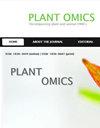2,4-二叔丁基酚萌发前除草活性和持久性与土壤类型的关系
Q3 Agricultural and Biological Sciences
引用次数: 0
摘要
虽然2,4-二叔丁基酚(2,4- dtbp)对多种杂草植物有较强的植物毒性作用,但对其在土壤中萌发前除草活性的研究仍然很少。本研究旨在探讨两种土壤类型对2,4- dtbp出苗前除草活性和持久性的影响。在一个生长室中进行生物测定,其中鹅草[Eleusine indica (L.)]Gaertn。在无菌和非无菌土壤条件下,以不同剂量2,4- dtbp在两个土壤系列中播种。每个处理的生物测定分4个重复进行,采用完全随机设计。2,4- dtbp在砂壤土中表现出较强的苗期前根系抑制活性,在6.14 kg /ha的施用量下,对籼稻根系生长完全抑制(100%抑制)。由于微生物活性高,2,4- dtbp在粉壤土中迅速解毒,即使在20.4 kg /ha的施用量下,其在10周内出苗率也达到100%,完全失去了植物毒性。然而,2,4- dtbp在沙质壤土中仍然具有高度的植物毒性,在10周的调查期间,它分别使根和芽的生长减少了47%和36%。未灭菌土壤中微生物的存在进一步表明,土壤微生物可能会改变2,4- dtbp的化学结构,从而降低其毒性。2,4- dtbp在粉壤土中具有较高的出苗前除草活性和生物降解性,表明其作为天然土壤施用除草剂具有发展潜力本文章由计算机程序翻译,如有差异,请以英文原文为准。
Pre-emergence herbicidal activity and persistence of 2,4-di-tertbutylphenol in relation to soil types
Although 2,4-di-tert-butylphenol (2,4-DTBP) has demonstrated strong phytotoxic effect on various weedy plants in previous findings, research on its pre-emergence herbicidal activity in the soil is still scanty. The aim of this study was to investigate the effects of two soil types on pre-emergence herbicidal activity and persistence of 2,4-DTBP. The bioassay was carried out in a growth chamber where goosegrass [Eleusine indica (L.) Gaertn.] seeds were sown in different rates of 2,4-DTBP in two soil series under sterilized and non-sterilized soil conditions. Bioassays of each treatment were conducted in four replicates and arranged in completely randomized design. 2,4-DTBP exhibited potent pre-emergence activity as a root inhibitor where it completely inhibited (100% inhibition) of the root growth of E. indica in sandy loam soil at an application rate of 6.14 kg ai/ha. 2,4-DTBP was rapidly detoxified in silt loam soil as a result of high microbial activity where it completely lost its phytotoxicity by giving 100% emergence within 10 weeks even it was applied at an application as high as 20.4 kg ai/ha. However, 2,4-DTBP remained highly phytotoxic in sandy loam soil where it reduced the root and shoot growth by 47 and 36%, respectively, throughout 10 weeks duration of the investigation. The presence of microbes in non-sterilized soil further suggest that soil microbes may modify the chemical structure of the 2,4-DTBP, which in turn decreased its toxicity. The high level of pre-emergence herbicidal activity in conjunction with its biodegradation in silt loam soil imply that 2,4-DTBP may have potential for development as a natural-soil applied herbicide
求助全文
通过发布文献求助,成功后即可免费获取论文全文。
去求助
来源期刊

Plant Omics
生物-植物科学
CiteScore
1.30
自引率
0.00%
发文量
0
审稿时长
6 months
期刊介绍:
Plant OMICS is an international, peer-reviewed publication that gathers and disseminates fundamental and applied knowledge in almost all area of molecular plant and animal biology, particularly OMICS-es including:
Coverage extends to the most corners of plant and animal biology, including molecular biology, genetics, functional and non-functional molecular breeding and physiology, developmental biology, and new technologies such as vaccines. This journal also covers the combination of many areas of molecular plant and animal biology. Plant Omics is also exteremely interested in molecular aspects of stress biology in plants and animals, including molecular physiology.
 求助内容:
求助内容: 应助结果提醒方式:
应助结果提醒方式:


